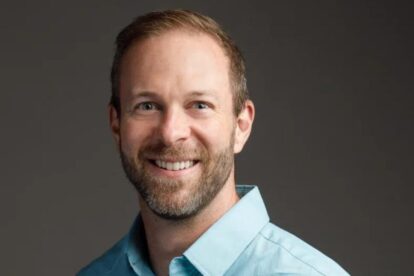The College Mental Health Crisis Could Actually Be A Sign of Progress

In recent years, the media has thrown a spotlight on increasing rates of mental distress amongst college students, leaving many scrambling to understand the causes of the perceived crisis. But one psychologist believes that proper contextualization reveals a story of successful policy rather than policy failures. If you are struggling with emotional turmoil, however, you may need to look beyond collegiate mental health services to heal.
“The Mental Health Crisis On Campus”
“Mental Health Problems For College Students Are Increasing”
“Could Unlearning Help Our College Mental Health Crisis?”
These are just some of the headlines published in recent years regarding the perceived emergency state of mental health amongst college students. Articles detailing the skyrocketing rates of psychological distress amongst undergrads and graduate students alike fill the pages of newspapers and magazines regularly, brimming with dire statistics showing widespread prevalence of emotional suffering. But what if those statistics tell a different story than commonly assumed? What if, instead of indicating that something is very wrong, they indicate that we’re doing something right?
Evidence of Crisis
Studies on college student mental health do indeed paint a bleak picture. According to the 2004 Mental Health Task Force of Graduate Student Mental Health at the University of California – Berkley, 45% of graduate students reported at least one significant instance of emotional or stress-related problems in the past year. Meanwhile, the 2012 American Freshman annual survey “found that 30% of college freshman report feeling frequently overwhelmed.” Amongst women, the number was 40.5%, the highest level since the survey was first administered in 1985. “Trend data clearly suggests increases in levels of stress, depression, and anxiety at least since the 1980s,” writes Dr. Gregg Henriques. “[O]ne study found that the average high school student in the year 2000 has the same level of anxiety as the average psychiatric patient did in the 1950s; and those rates have only increased in the last decade.”
Meanwhile, college mental health centers are overwhelmed by demand for services. At Boston University alone, the number of students seeking help at Student Health Services Behavioral Medicine more than doubled between 2010 and 2014, growing from 290 to 647. According to Behavioral Medicine clinicians, “the number of students needing medical transports for psychiatric evaluation has also risen, from 68 in the 2010-2011 academic year to 120 [in 2014].” The numbers reflect national trends; according to the 2015 Center for Collegiate Mental Health (CCHM) report, demand for mental health services is growing five times faster than student enrollment, leaving understaffed and underfunded collegiate mental health centers struggling to accommodate those needing help.
Begin Your Recovery Journey.
877-727-4343Origin Theories
As public awareness of mental distress amongst college students grows, clinicians, journalists, parents, and students themselves have developed a variety of theories for the ostensible spike in emotional instability. Kate Lunau of McLeans writes:
Some wonder if today’s students are having difficulty coping with the rapidly changing world around them, a world where they can’t unplug, can’t relax, and believe they must stay at the top of their class, no matter what.
Helicopter parents, economic crisis, student loan debt, rising academic standards, and use of prescription stimulants as performance enhancers have all been blamed for the current state of student mental health. Psychologist Gail Hutchinson, director of Western University’s student development center, even suggests that “part of it could be due to the fact that families are smaller, so students carry a bigger piece of their parents’ expectations.” Meanwhile, many believe that a growing number of students are entering college with pre-existing psychiatric diagnoses, accounting for at least part of the increased need for services (a theory disputed by the CCHM report).
Contextualizing the College Mental Health Crisis
Ben Locke, associate director of clinical services at Penn State’s Counseling and Psychological Services, however, has a different theory. “It’s important to situate these national trends in the appropriate context,” he writes for Centre Daily Times.
Passed in 2004 and funded in 2005, the Garrett Lee Smith Memorial Act released millions of dollars of funding to help prevent suicide among youth and college students. During the past decade, this federal funding mechanism has injected more than $60 million into college and university communities for the explicit purpose of decreasing mental health stigma, increasing help-seeking behaviors, preventing suicide, and training collegiate communities to identify and refer at-risk students to seek treatment. In addition, more than $275 million has been distributed to states to support youth suicide prevention efforts.
When these interventions are factored in, the concerning trends of increasing demand and increasing rates of threat-to-self characteristics are actually consistent with the desired outcomes of such national intervention efforts: increase the early identification of students-at-risk in order to refer them for treatment.
In other words, it could be that efforts to promote mental health amongst students aren’t failing, but working, and students who would previously not have identified emotional distress are now recognizing and talking about their struggles. More importantly, students are also more willing to access mental health services, both because there are more services available and because decreased stigma has removed barriers to access. At the same time, colleges themselves are more apt to identify at-risk students and offer treatment or referrals, particularly for those exhibiting “threat-to-self” characteristics.
Locke points out, however, that while the success of national intervention efforts are to be lauded, there are also major concerns that must be addressed:
[T]he rapid growth in high-risk demand paired with relatively flat funding for counseling centers means that it is now increasingly difficult for students to access mental health services in general, and especially formal treatment. As a result, college and universities must now focus their attention on addressing the unintended consequences of well-intentioned national intervention efforts by growing mental health services on campus to meet new levels of demand.
By expanding funding and access, what is perceived as a crisis could open up opportunities for healing that students of the past never had.
Call for a Free Confidential Assessment.
877-727-4343Alternative Avenues to Treatment
Locke’s take on the college mental health crisis is certainly a much more positive framing of what the prevailing readings of statistics are telling us. At the same time, those statistics still indicate very real and widespread suffering, which limited funding and inadequate college mental health services can currently not fully address. As such, many students must look beyond on-campus programming to begin their healing journeys.
At Bridges to Recovery, we offer comprehensive, residential mental health treatment for people struggling with all forms of mental illness. By combining the best evidence-based therapeutic modalities to create well-rounded and effective treatment experiences, we are able to help our clients regain psychological stability and enhance quality of life. Our highly trained clinicians create personalized treatment plans for each client, ensuring that your unique needs are addressed, including any specific factors related to your collegiate experience. Due to the intensity of our programming, we are able to offer more treatment in 45 days than is possible in a year of outpatient treatment, allowing for rapid healing and the best outcomes while letting you get back to your educational pursuits as quickly as possible.
We are also deeply cognizant of the fact that the road to recovery does not end with us; rather, ongoing mental wellness requires thoughtful aftercare planning to make sure that you preserve and build on the gains made in residential care. As a result, we work collaboratively with you, your family, and any external care providers to craft meaningful strategies that will allow you to transition back into your daily life with confidence and the resources you need for continued success.
Psychological distress can be painful and disorienting at any point in life. The college years, however, may present special challenges to both your mental health and your ability to access services. But help is out there and, with the right care, you can find your way back to emotional stability and rejuvenation of mind, body, and spirit.
Bridges to Recovery’s internationally renowned program offers the highest level of care for people living with mental health disorders as well as co-occurring substance use and eating disorders. Contact us for more information about how we can help you or your loved on start the journey toward lasting wellness.
Image Source: Pexels user Vadim Sherbakov






